BBQ Sauces That Make a Difference: Your Guide to Flavor Perfection
A great BBQ sauce is more than just a condiment; it’s the finishing touch that can transform a good piece of meat into a masterpiece. It’s the sweet, tangy, spicy, or smoky glaze that brings all the flavors of a dish together. While bottled sauces are a convenient option, nothing compares to the depth and complexity of a homemade sauce. Understanding the core ingredients and regional styles is the first step to creating BBQ sauces that make a difference.
This comprehensive guide will take you on a journey through the world of BBQ sauce, exploring its history, the essential components, and a deep dive into the unique characteristics of different regional styles. By the end, you’ll have the knowledge and confidence to create your own signature sauce.
The Anatomy of a Great BBQ Sauce
Every BBQ sauce, regardless of its style or origin, is built on a few key flavor pillars. Mastering these components is the secret to creating BBQ sauces that make a difference.
BBQ Sauces That Make a Difference: Your Guide to Flavor Perfection
American BBQ Styles
1. The Base: The Foundation of Flavor
The base of a BBQ sauce provides its primary body and texture. The most common bases are:
- Tomato: A thick, rich tomato paste or ketchup is the classic base for many American BBQ sauces, especially those from Kansas City and St. Louis. It provides a sweet and tangy foundation.
- Vinegar: Foundational to Carolina-style sauces, a vinegar base provides a sharp, acidic tang that cuts through the richness of fatty meats.
- Mustard: The core of South Carolina’s distinct BBQ tradition, mustard-based sauces are tangy and savory, with a hint of spice.
- Mayonnaise/Cream: Less common but equally delicious, white BBQ sauces from Alabama use a creamy base, often with vinegar and spices, creating a tangy and savory sauce perfect for chicken.
2. Sweetness: Balancing the Tang
Sweeteners balance the acidity of the vinegar and the bitterness of spices. The most popular choices include:
- Brown Sugar: Adds a deep, molasses-like sweetness and richness.
- Honey: Provides a floral, natural sweetness and a sticky glaze.
- Molasses: Offers a complex, dark sweetness that is essential for many Kansas City-style sauces.
- Maple Syrup: A great alternative that provides a unique, woodsy sweetness.
3. Acidity: The Flavor Cutter
Acidity is crucial for cutting through the fat of the meat and preventing the sauce from tasting one-dimensional. Common acidic components are:
- Vinegar: Apple cider vinegar is the most popular, but white vinegar or red wine vinegar can also be used.
- Lemon Juice: Adds a bright, citrusy tang.
- Mustard: Provides both acidity and a savory element.
4. Spices and Seasonings: The Soul of the Sauce
This is where the magic happens. A blend of spices gives a sauce its character and complexity. Essential spices include:
- Paprika: Adds color and a mild, earthy flavor. Smoked paprika is a great option for a deep, smoky note.
- Garlic and Onion Powder: Provide a savory, aromatic base.
- Cayenne Pepper or Red Pepper Flakes: Bring the heat.
- Black Pepper: Adds a sharp, pungent kick.
- Cumin and Chili Powder: For an earthy, smoky undertone.
Internal Link Suggestion: To complement your sauces, it’s important to have the right meat. Find out which cuts work best in our guide to The Ultimate Guide to Beef, Pork, and Poultry for BBQ.
A Tour of American Regional BBQ Sauces
The United States is a patchwork of distinct BBQ traditions, each with its own signature sauce. Exploring these regional styles is a fantastic way to understand what makes BBQ sauces that make a difference.
Kansas City-Style BBQ Sauce: Sweet, Thick, and Tangy
Kansas City is famous for its slow-smoked meats and its thick, sweet, and tangy BBQ sauce. This style is the one most people associate with classic American BBQ.
- Characteristics: Thick, tomato-based, with a prominent sweetness from molasses and brown sugar. It’s balanced by a tangy kick from vinegar and a hint of spice.
- Ideal for: Ribs, pulled pork, and brisket. Its thick consistency makes it perfect for glazing.
- Key Ingredients: Ketchup, molasses, brown sugar, vinegar, and a blend of spices including paprika, garlic, and onion powder.
- Internal Link Suggestion: For a deep dive into the regional rivalry, check out Texas BBQ vs Kansas City BBQ.
Carolina-Style BBQ Sauce: The Vinegar-Based Tang
Carolina BBQ is a world of its own, with sauces that are as diverse as the state itself. The primary styles are vinegar-based, thin, and tangy, designed to be mopped onto the meat during cooking or used as a finishing sauce.
- North Carolina (Eastern-Style):
- Characteristics: The purest and most traditional of the Carolina sauces. It’s a simple mix of vinegar, red pepper flakes, salt, and black pepper. It’s thin, acidic, and lets the flavor of the pork shine through.
- Ideal for: Whole-hog BBQ and pulled pork.
- North Carolina (Lexington/Piedmont-Style):
- Characteristics: A slightly sweeter variation of the Eastern style, with the addition of a small amount of ketchup or tomato product.
- Ideal for: Chopped pork shoulder.
- Internal Link Suggestion: Learn to make your own Carolina-style sauce with our recipe for How to Make Carolina-Style Pulled Pork with Vinegar Sauce.
South Carolina-Style BBQ Sauce: The Mustard Magic
South Carolina stands alone with its distinct mustard-based “Carolina Gold” sauce, a tradition that originated with German settlers in the region.
- Characteristics: Yellow in color, with a tangy and savory flavor from a mustard base. It’s often sweetened with honey or brown sugar and has a spicy kick from pepper and vinegar.
- Ideal for: Pulled pork, chicken, and sausages.
- Key Ingredients: Yellow mustard, vinegar, honey or brown sugar, and spices.
Texas BBQ Sauce: Simple and Meaty
Texas BBQ is all about the meat. The sauce is often an afterthought, and sometimes, no sauce is used at all. When it is, it’s typically a thin, savory sauce designed to complement, not overpower, the smoky flavor of the brisket.
- Characteristics: Thinner and more savory than KC sauce. It’s often tomato-based but with less sugar and more chili powder, cumin, and black pepper.
- Ideal for: Brisket and beef ribs.
- Key Ingredients: Beef drippings, tomato sauce, vinegar, and plenty of spices.
- External Link Suggestion: For more on the deep-rooted traditions of Texas BBQ, you can explore resources like the Texas Monthly BBQ page, a great authority on the subject.
Alabama White Sauce: The Creamy Surprise
A unique entry in the BBQ world, Alabama white sauce is a creamy, tangy, and peppery sauce. It’s an unusual but highly effective choice.
- Characteristics: Mayonnaise-based, with vinegar, black pepper, and other seasonings. It’s tangy and savory, with a thinner consistency than you might expect.
- Ideal for: Grilled or smoked chicken. Its creamy texture helps keep poultry moist.
- External Link Suggestion: The history and a breakdown of this sauce can be found on sites like Southern Living’s guide to white sauce, which highlights its use on smoked chicken.
Crafting Your Signature Sauce
Now that you understand the different styles, it’s time to create your own masterpiece. Here are some tips for making BBQ sauces that make a difference.
Tip 1: Start with a Good Base Recipe
Don’t reinvent the wheel. Start with a classic recipe for a style you love and use it as a foundation. From there, you can adjust the balance of flavors to your personal taste.
- Sweetness: If you love a sweet glaze, add more brown sugar or honey. For a less sweet sauce, use less.
- Heat: Increase the cayenne or red pepper flakes for more spice. Add a dash of liquid smoke for extra depth.
- Acidity: Adjust the amount of vinegar to control the tanginess.
Tip 2: Simmer for Depth of Flavor
A great sauce is one that has had time for the flavors to meld together. After combining all your ingredients, bring the sauce to a gentle simmer and let it cook for at least 20-30 minutes, stirring occasionally. This process deepens the flavors and helps thicken the sauce naturally.
Tip 3: Think About the Application
The consistency of your sauce matters.
- Thick Sauces: Ideal for glazing ribs or for serving on the side. They cling to the meat and create a beautiful, sticky crust.
- Thin Sauces: Perfect for mopping onto meat during a long cook or for mixing into pulled pork. They penetrate the meat more easily.
Tip 4: Don’t Be Afraid to Experiment
The best sauces come from a willingness to experiment. Try adding unexpected ingredients like coffee, whiskey, fruit preserves, or even a splash of Coca-Cola for a unique flavor profile. The goal is to create something that is uniquely yours and truly makes a difference.
Essential Sauce-Making Tools and Ingredients
Having the right tools and ingredients on hand will make the process much smoother.
- Heavy-Bottomed Pot: Prevents the sauce from scorching as it simmers.
- Whisk: Ensures all ingredients are fully incorporated and the sauce is smooth.
- Jars or Bottles: For storing your homemade sauce. Mason jars are a great choice.
- High-Quality Spices: The fresher your spices, the more flavorful your sauce.
- Vinegar: Keep a bottle of apple cider vinegar on hand, as it’s the most versatile for BBQ.
Conclusion
The difference between good and great BBQ often comes down to the sauce. By understanding the core components of a sauce and the distinct characteristics of regional styles, you can move beyond simple store-bought bottles and create BBQ sauces that make a difference. Whether you prefer the thick, sweet tang of Kansas City or the sharp, peppery bite of a Carolina vinegar sauce, crafting your own is a rewarding experience that will take your cooking to the next level. Fire up the grill, get your ingredients ready, and start your journey toward sauce perfection.
The Best Side Dishes and Sauces to Pair with BBQ and Steaks
The Best Side Dishes and Sauces to Pair with BBQ and Steaks
Further Reading:
- BBQ Recipes: Grill, Smoke & Sear Your Way to Delicious Meals – The Meat Master USA
- BBQ Rubs & Sauces Guide – The Meat Master USA
- BBQ Sauces 2026: The Complete Guide to Styles, Recipes, and Pairings – The Meat Master USA
- BBQ Sauces That Make a Difference: Your Guide to Flavor Perfection

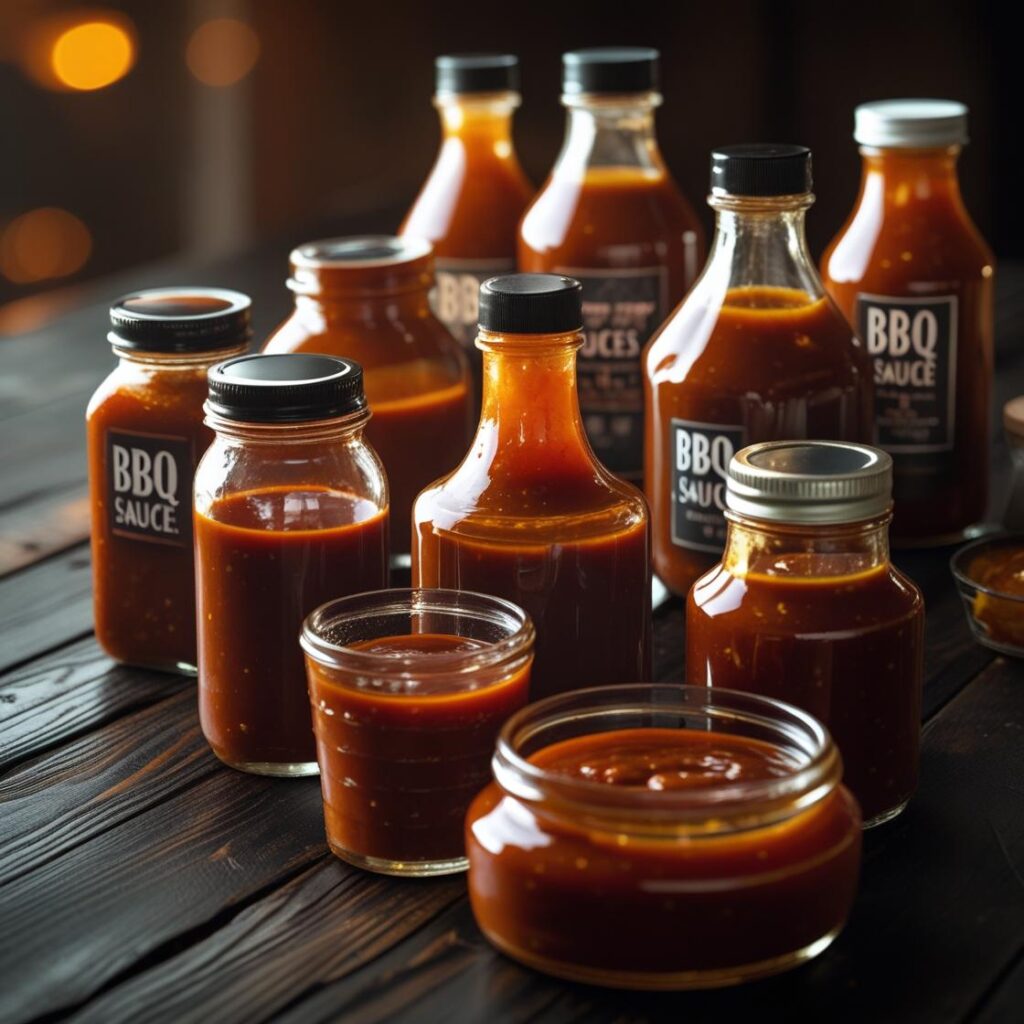

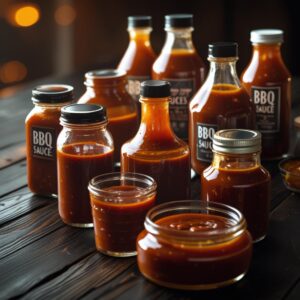
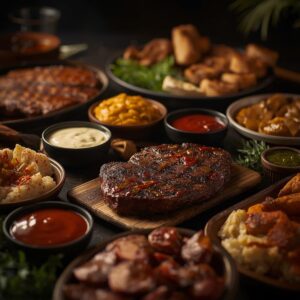
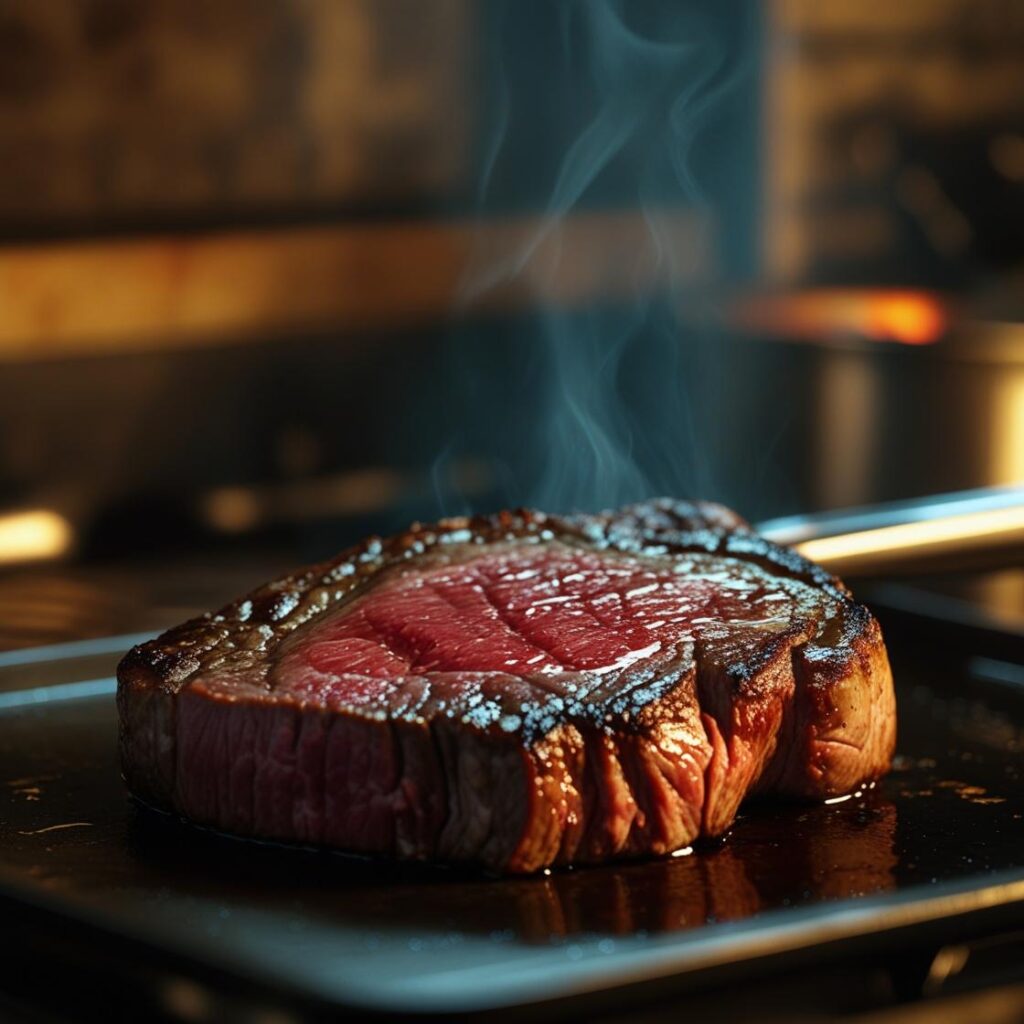

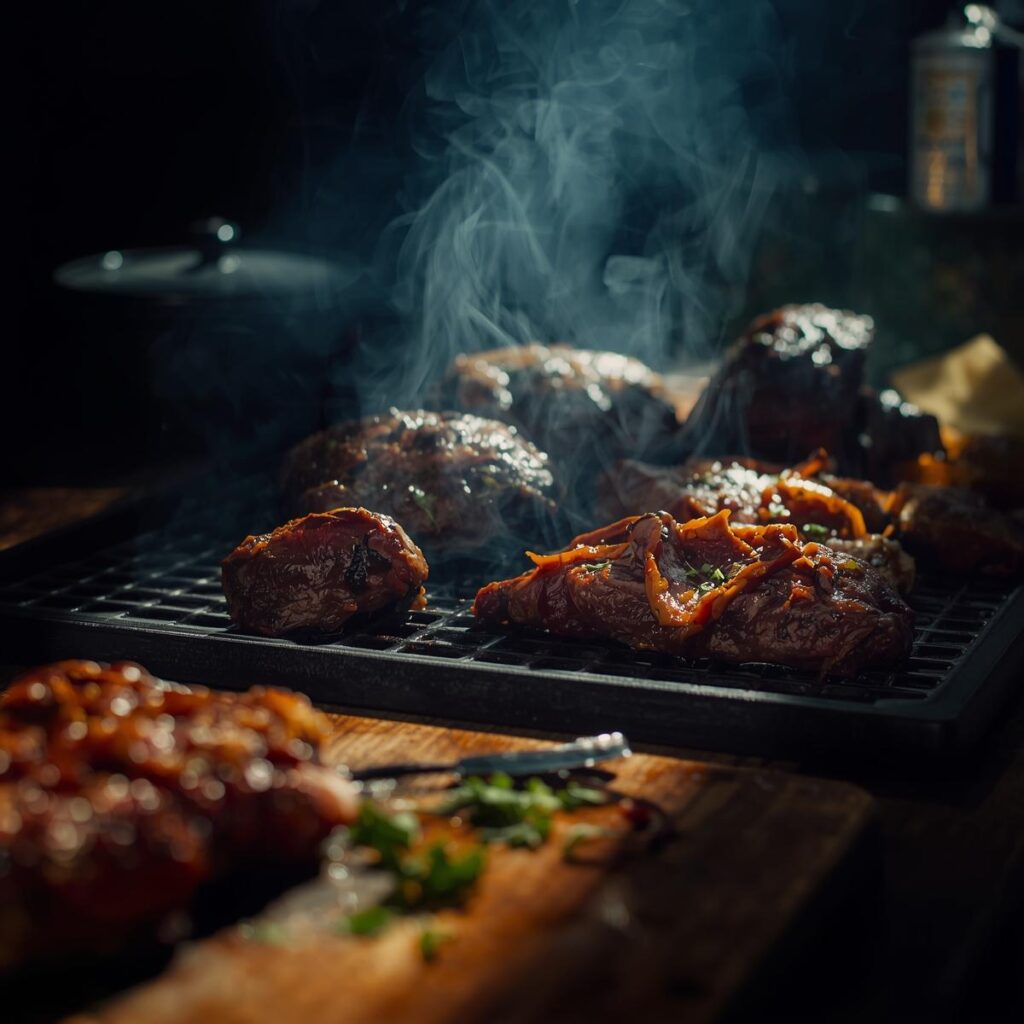
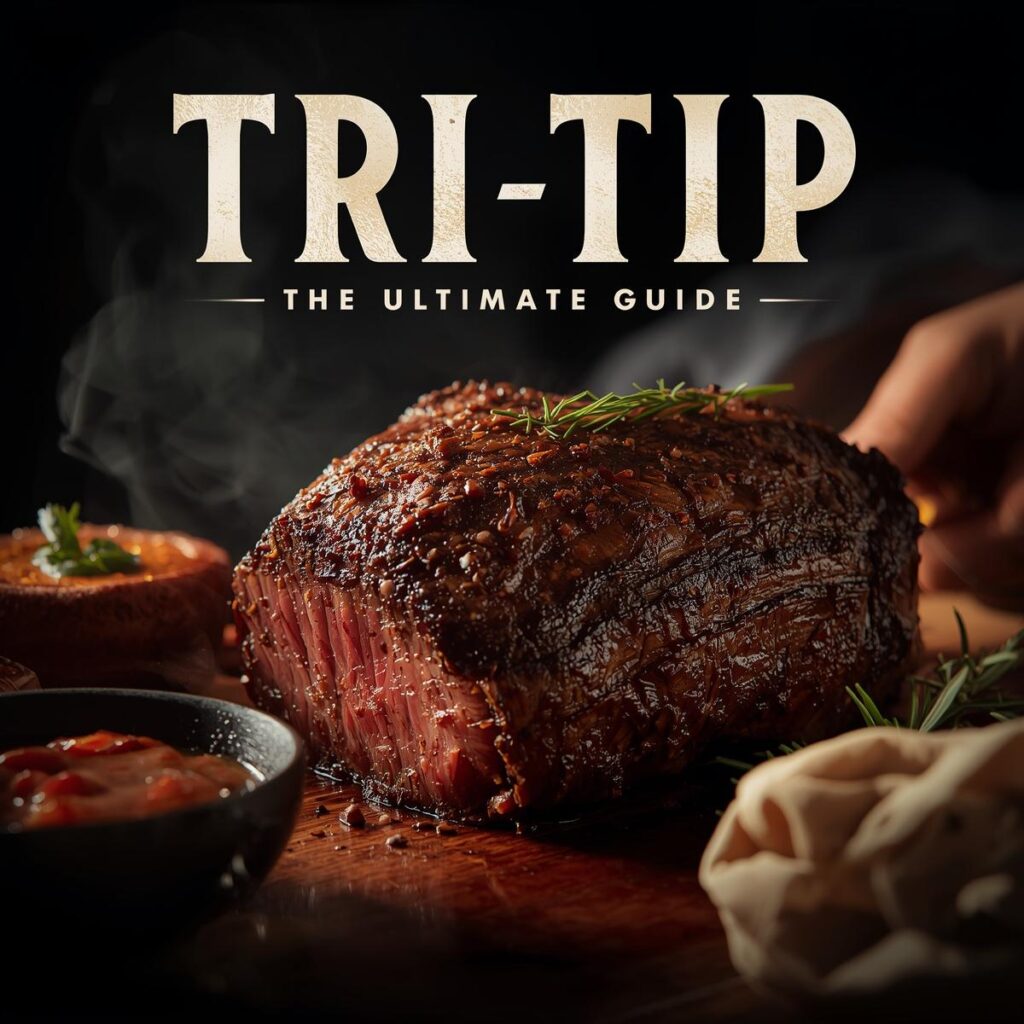
Pingback: BBQ: More Than a Meal: Your Guide to Grilling & Smoking [2025]
Pingback: Texas BBQ vs Brazilian Churrasco: Key Differences, Flavors & Techniques [2025]
Pingback: Best Pork Cuts for BBQ: Ultimate Grilling & Smoking Guide [2025]
Pingback: BBQ Styles: A Global Guide: Exploring Regional Traditions
Pingback: BBQ Tips: 25 Pro Secrets for Perfect Grilling and Smoking
Pingback: Argentinian Asado: The Ultimate Guide to Fire, Meat, and Gaucho Tradition